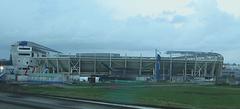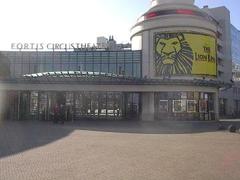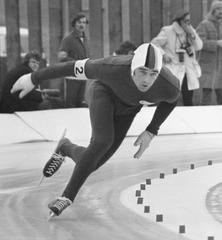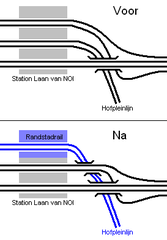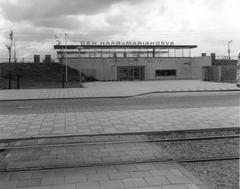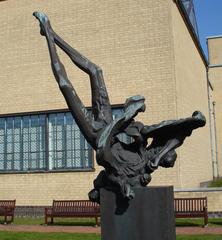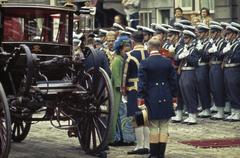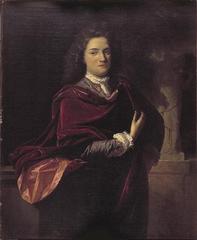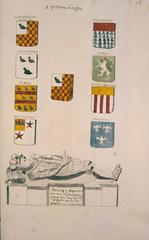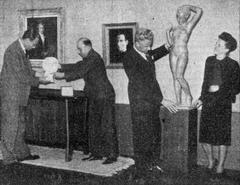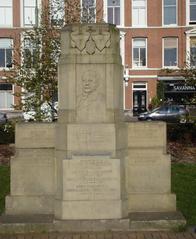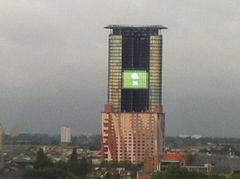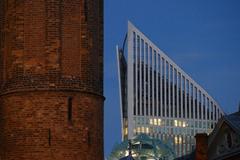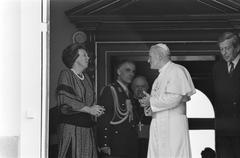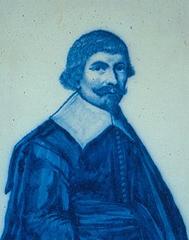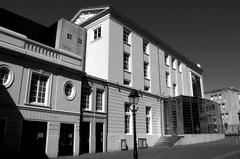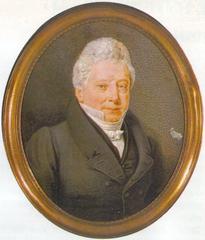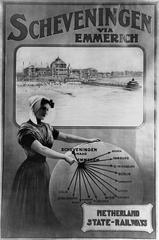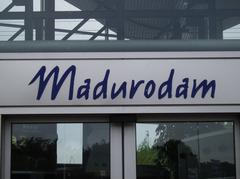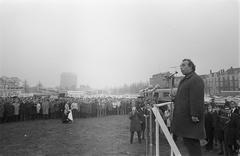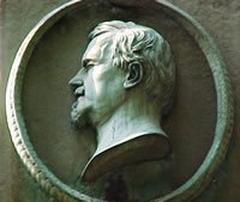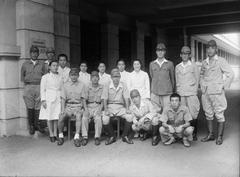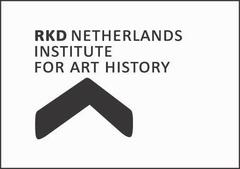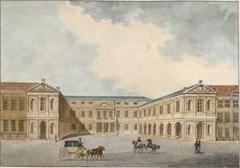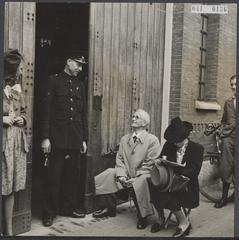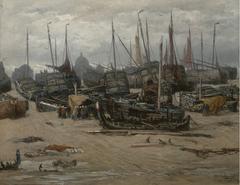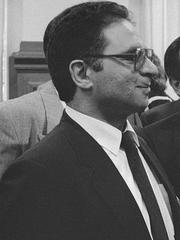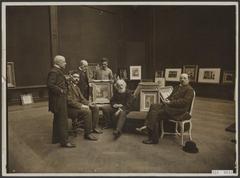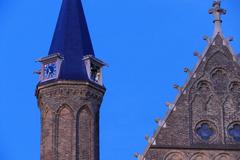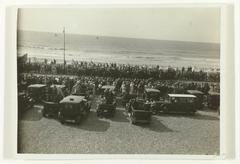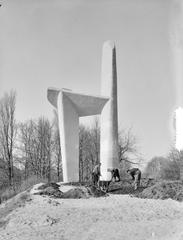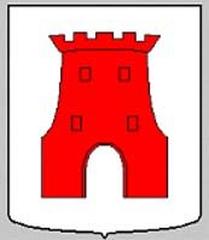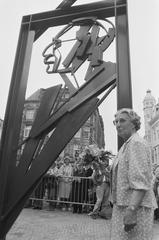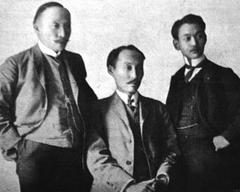
Oud Eik en Duinen Cemetery: Visiting Hours, Tickets, and Historical Insights in The Hague
Date: 03/07/2025
Introduction
Oud Eik en Duinen Cemetery, often called the “Dutch Père-Lachaise,” is a remarkable heritage site in The Hague. With origins tracing back to the 13th century, it embodies the intersection of Dutch history, culture, and art. This guide provides a comprehensive overview of its historical development, notable burials, architectural features, visitor information—including opening hours and ticketing—plus practical tips for making the most of your visit. Whether you are a history enthusiast, genealogist, or seeking a peaceful retreat, Oud Eik en Duinen offers a unique glimpse into the Netherlands’ rich past.
For official visitor details and further historical context, consult resources such as the Monuta website, Den Haag Municipality, and dodenakkers.nl.
Table of Contents
- Introduction
- Historical Background
- Notable Burials and Cultural Significance
- Architectural and Natural Features
- Visiting Information
- Community Engagement and Traditions
- Frequently Asked Questions (FAQs)
- Nearby Attractions
- Summary and Final Tips
- References
Historical Background
Origins and Medieval Development
Oud Eik en Duinen’s story begins in the early 13th century, when William II, Count of Holland, founded a chapel in memory of his father, Floris IV (dodenakkers.nl; Wikipedia). This spiritual landmark soon evolved into a burial ground and, by the 14th century, became a pilgrimage destination due to reports of miraculous relics. The area gained parish status in 1331 and thrived as a religious and social hub through the late Middle Ages.
Decline and Reformation
The late 15th and 16th centuries brought decline, exacerbated by religious upheaval during the Protestant Reformation and the Eighty Years’ War. The chapel was largely demolished in 1581, though the evocative ruins—including part of the medieval tower—remain visible today (dodenakkers.nl).
Revival and 19th-Century Expansion
After a period of abandonment, the cemetery was revived in the 17th century, coinciding with The Hague’s growth and the demand for burial sites outside the city center (Wikipedia). By the 19th century, Oud Eik en Duinen became the preferred resting place for the city’s elite and expanded to accommodate increasing numbers. In 1891, Nieuw Eik en Duinen was established nearby, and the original became known as Oud Eik en Duinen (agonat.best; tripomatic.com).
20th-Century Preservation
Legalization of cremation in 1914 and the addition of a new chapel in 1929 marked the cemetery’s modernization. The post-war decades saw reduced burials, but significant restoration safeguarded its monuments and landscape. The ruins were designated a national monument, and continued investment by both private and municipal stakeholders ensures the site’s preservation today (dodenakkers.nl).
Notable Burials and Cultural Significance
Oud Eik en Duinen is renowned as the final resting place for many of the Netherlands’ most distinguished figures, including:
- Abraham Kuyper (Prime Minister and theologian)
- Willem Drees (Prime Minister)
- Louis Couperus (novelist)
- Menno ter Braak (writer and critic)
- Johan Thorbecke (architect of the Dutch constitution)
- Pieter Cort van der Linden (Prime Minister during WWI)
- Prof. Jan Tinbergen (Nobel laureate in Economics)
- Hendrik Willem Mesdag (painter)
- Pieter Sjoerds Gerbrandy (Prime Minister in exile during WWII)
The cemetery also houses Commonwealth war graves and is a site for annual commemorations (tracesofwar.com; ww2cemeteries.com; Den Haag Direct).
Architectural and Natural Features
Covering about 14 hectares, the cemetery is an open-air museum of funerary art and architecture, representing styles from Gothic to Art Nouveau and neoclassical to modernist (dodenakkers.nl). Highlights include:
- The evocative medieval chapel ruins
- Elaborate mausoleums and obelisks
- Art Nouveau and Romantic memorials
- Mature oaks and a landscape that preserves part of The Hague’s natural dune ecosystem
The tranquil, park-like setting invites visitors to reflect and enjoy the changing beauty of the seasons (Trek Zone).
Visiting Information
Visiting Hours and Tickets
- Opening Hours: Generally open daily from 8:00 AM to dusk. Typical hours are 8:00 AM–6:00 PM (April–October) and 8:00 AM–5:00 PM (November–March), but always check the official site or Den Haag Municipality for updates.
- Admission: Free of charge. No tickets are required for individual visitors. Guided tours and special events may require advance booking and a fee (Trip.com).
Accessibility
- By Public Transport: Easily accessible via tram lines 1 and 9, RandstadRail 3, and bus 21. See OV9292 for schedules.
- Parking: Limited; public transport is recommended (dichterbijdedood.com).
- Paths: Paved and mostly flat, suitable for wheelchairs and strollers. Some older sections may be uneven; accessible restrooms are available.
- Facilities: Restrooms near the entrance; benches throughout. No on-site cafés or shops.
Guided Tours
Guided historical and thematic tours are offered by the cemetery administration or local societies. Book in advance, especially during peak seasons or heritage events (Den Haag Municipality).
Visitor Guidelines
- Maintain silence and respect, especially during funerals or ceremonies.
- Photography is permitted for personal use; avoid capturing mourners.
- Modest dress is recommended.
- Only service animals are allowed.
- Use provided bins for litter; do not disturb grave decorations.
Community Engagement and Traditions
The Friends of Oud Eik en Duinen Foundation and the Commission of Grave Owners actively support preservation and organize community events. Annual commemorations, such as All Souls’ Day and Remembrance Day, reinforce the cemetery’s ongoing connection to public memory (dodenakkers.nl; Den Haag Events).
Frequently Asked Questions (FAQs)
Q: What are the opening hours?
A: Typically 8:00 AM to dusk; check the official website for seasonal updates.
Q: Is admission free?
A: Yes, entrance is free for all visitors.
Q: Are guided tours available?
A: Yes, book in advance through the administration or local historical societies.
Q: Is the cemetery wheelchair accessible?
A: Most main paths are accessible; some older sections may be uneven.
Q: Can I take photos?
A: Yes, but be discreet and respect ongoing services.
Q: How do I get there by public transport?
A: Tram lines 1, 9, RandstadRail 3, and bus 21 all stop nearby.
Nearby Attractions
Enhance your visit by exploring The Hague’s cultural highlights:
- Clingendael Park: Renowned for its Japanese Garden (DutchReview)
- Mauritshuis Museum and the Peace Palace: Easily accessible by tram
- Dekkersduin: Historic dune site
- Fotomuseum Den Haag: Contemporary and historical photography exhibitions
- Sportpark Nieuw Hanenburg: Cricket ground
Summary and Final Tips
Oud Eik en Duinen Cemetery is a living chronicle of Dutch history and culture—its serene parkland, monumental art, and notable graves offer opportunities for reflection, education, and inspiration. The site is accessible, free to visit, and conveniently located near other cultural attractions in The Hague. For the best experience:
- Visit during spring or autumn for seasonal beauty
- Use public transport for convenience
- Join a guided tour for deeper insight
- Consult official resources for the most current information
Explore its winding paths, admire the monuments, and connect with the stories that shaped the Netherlands.
References and Further Reading
- Oud Eik en Duinen Cemetery - Dodenakkers.nl
- Oud Eik en Duinen - Wikipedia
- Oud Eik en Duinen Historical Information - Agonat.best
- Oud Eik en Duinen Cemetery - Tracesofwar.com
- Oud Eik en Duinen War Graves - WW2Cemeteries.com
- Oud Eik en Duinen Official Site - Monuta
- Den Haag Municipality - Cemeteries
- Oud Eik en Duinen Visitor Guide - Trip.com
- Oud Eik en Duinen Visitor Guide - Dichterbijdedood.com
- Oud Eik en Duinen Overview - Den Haag Direct
- Oud Eik en Duinen Historical Context and Tours - Monumenten-denhaag.nl



